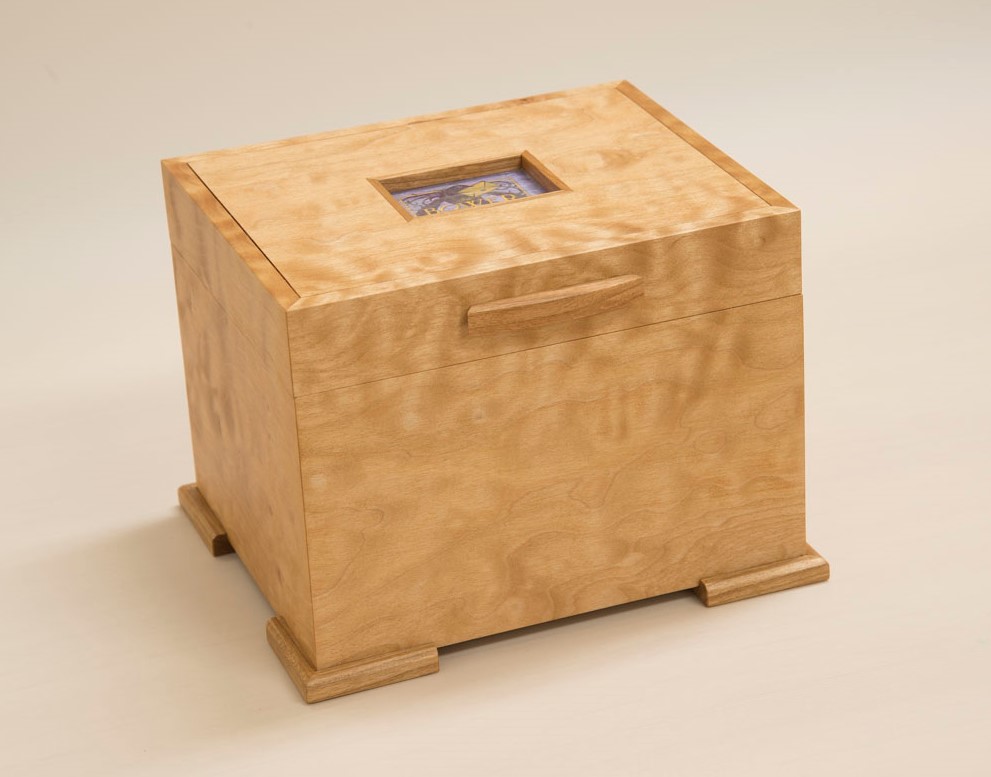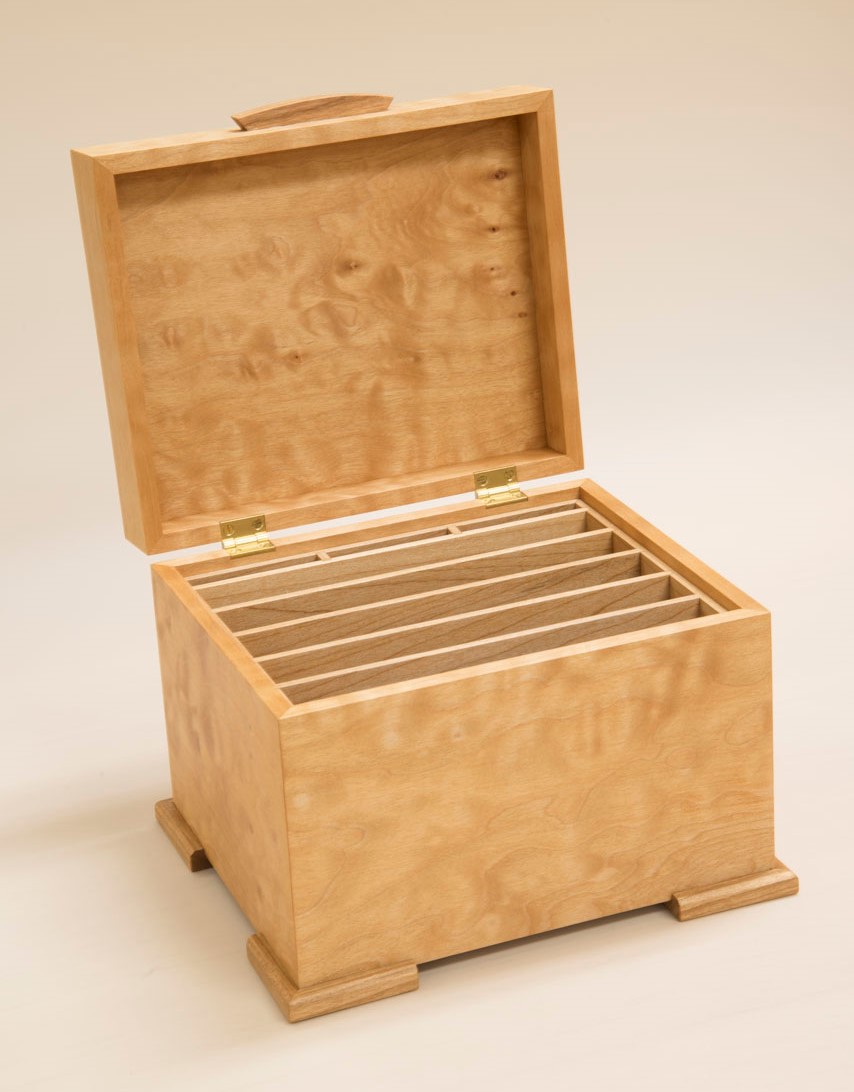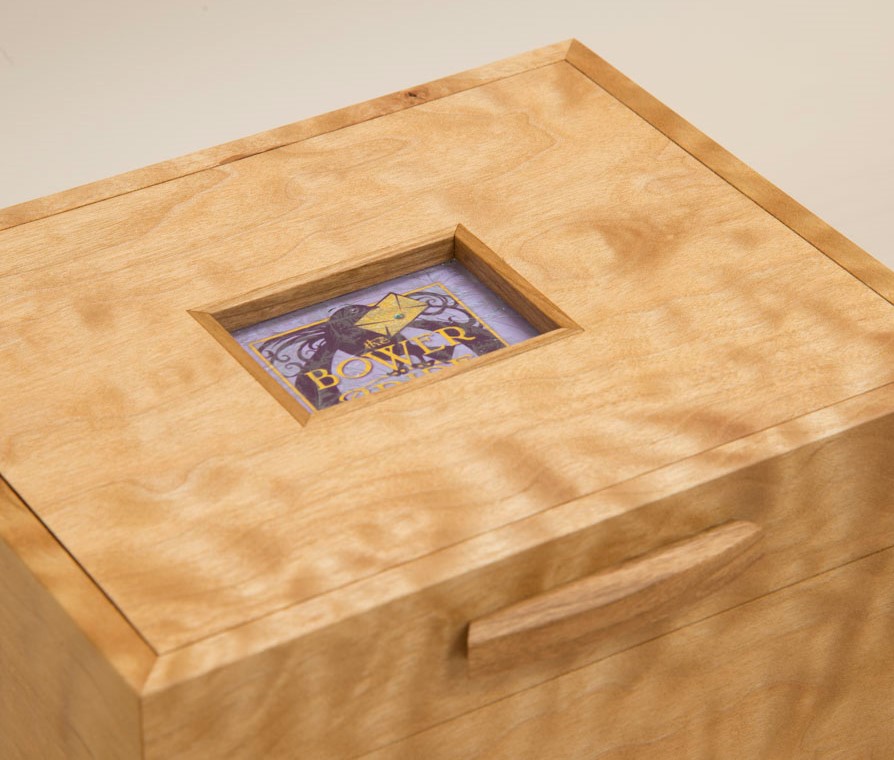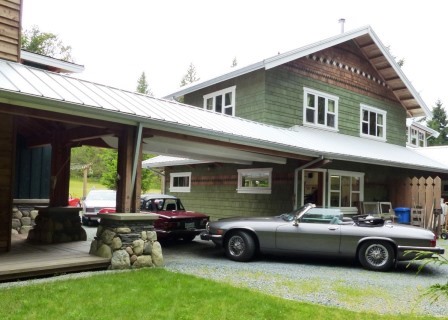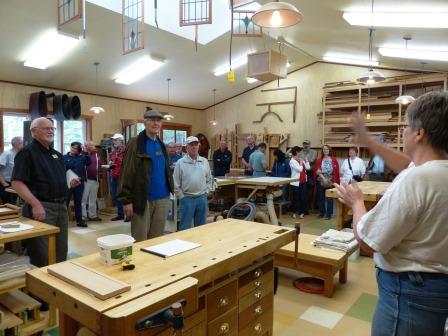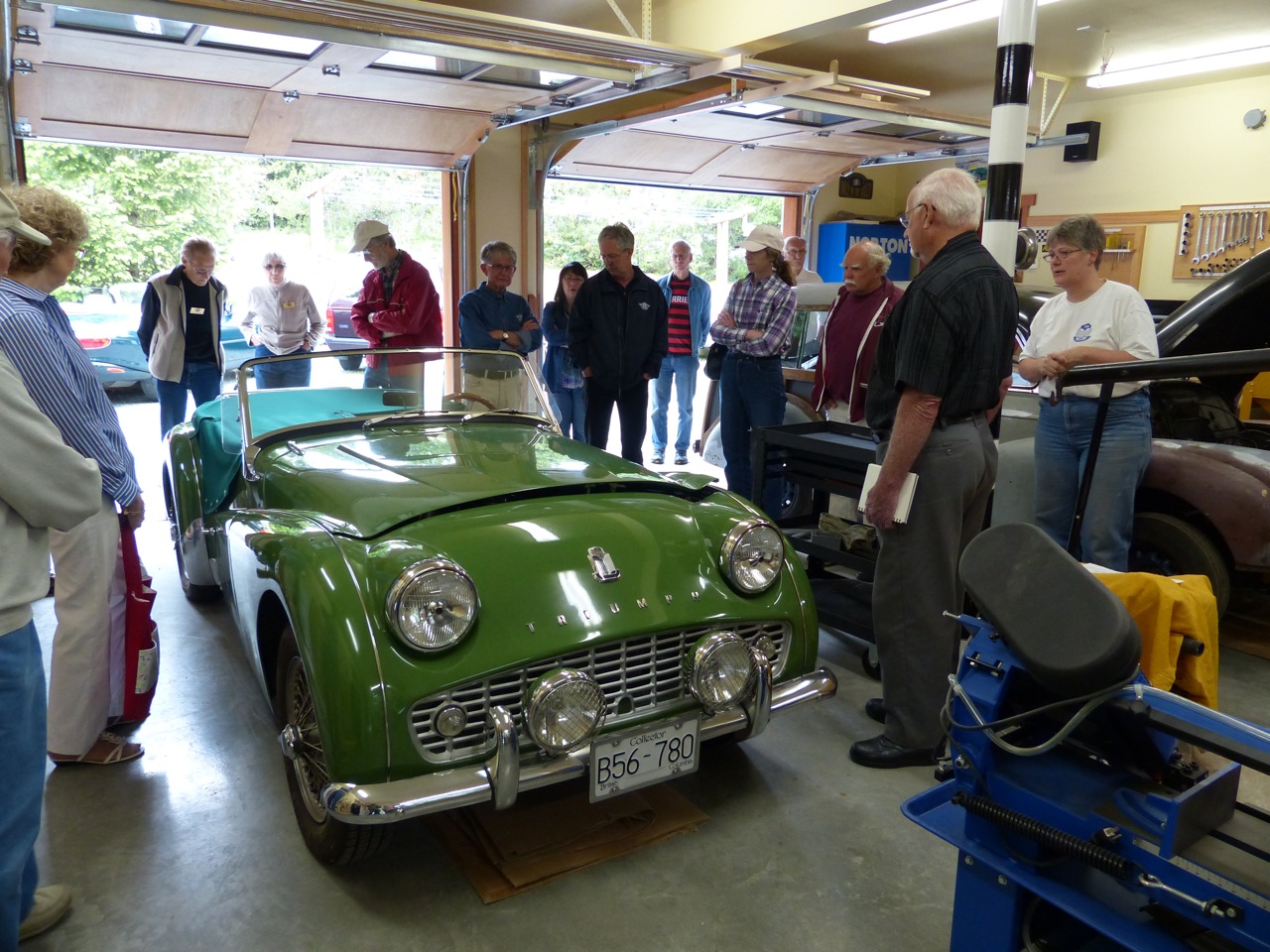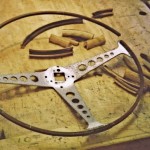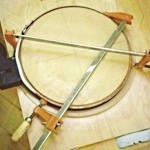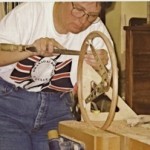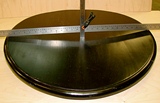The joining process begins by planeing the edges to obtain a good glue joint, then taping them together in pairs. Piece #1 is joined to #2, piece #3 to #4, and so on. Once each joint is fully taped the pattern is bent backwards on itself and a tiny dab of glue is used to the joint line. Once the glue is cured all of the tape comes off and the two pieces are permanently connected and every bit as strong as a single piece of veneer.
With 8 pairs joined together, the pieces are planed again and joined to form the quarters. With the quarters complete they are checked to confirm a 90 degree angle. ( I now know why hockey teams so often say: "Things were going great until we hit the quarter-finals.") A few minor adjustments and the quarters were joined into the two halves, which were then adjusted and the final circle was taped and glued.
The trick used to make sure the veneer segments were centered on the plywood substrate was to place a tiny finishing nail in the centre of the plywood circle which was just allowed to poke through the point where all of the veneer segments met.
Once the veneers were pressed onto the circle and trimmed, a few coats of urethane were applied and the table was ready to head home.
